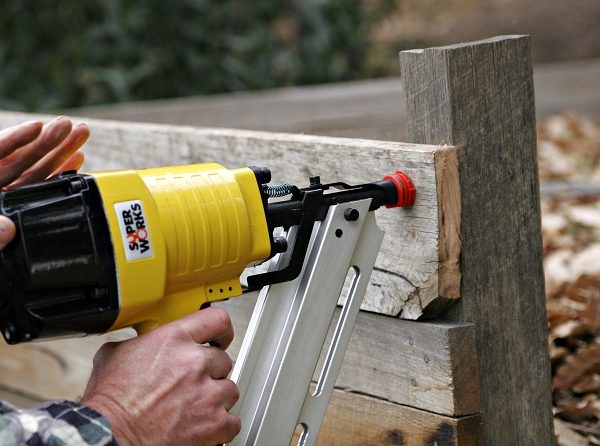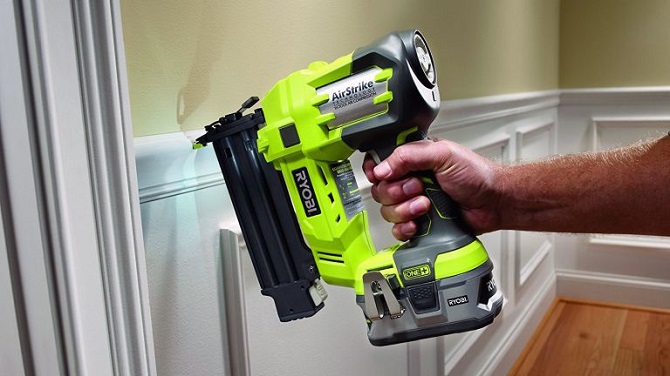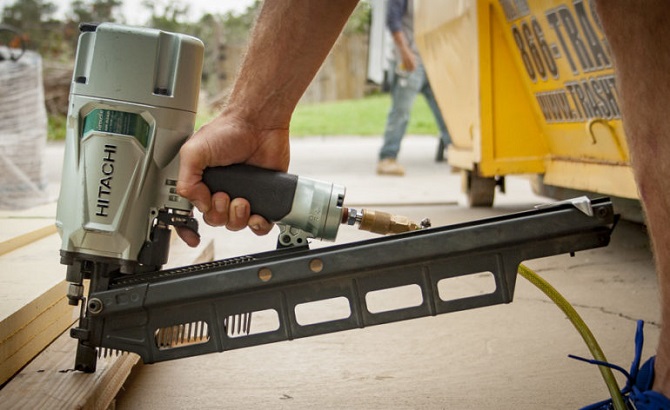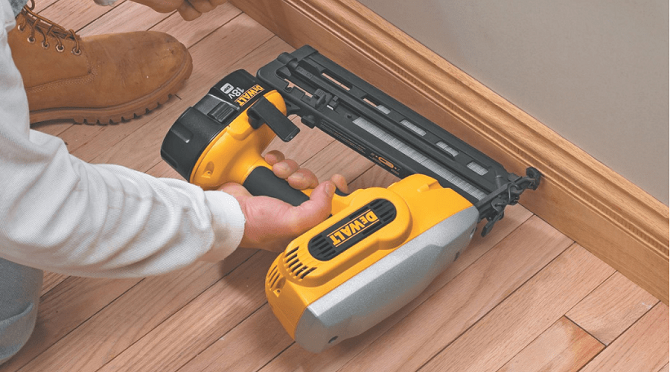12
Aug

When you’re tasked with nailing large pieces of materials together accurately and quickly, you’re going to need a framing nailer. While the old tried and tested method of nailing things with a hammer is still popular, it’s not nearly as fast, accurate, and most importantly – safe. Power nailers are specifically designed to make nailing tasks easier and are commonly used for precision work, whereas framing nailers are designed for larger projects. So whether you’re building a doghouse or a house, are tasked with a flooring, roofing or framing job, the right nailer can make your job not only significantly easier, but also much quicker. But what nail gun model is the right one for your application? There are a couple of important things to consder when choosing a nail gun.

source: futurecdn.net
After figuring out what you’re going to use the nailer for, you’ll have an easy time deciding the type of nail gun you have. Besides the aforementioned factors to be considered, you should also consider the brand. Premium tool manufacturers such as Paslode Tool, DeWalt, Hitachi, Makita, etc. feature a wide range of nailers suitable for different tasks and projects. Nailers from these manufacturers are typically high-performance, reliable, packed with safety features and backed by a warranty.
Most nail guns are either pneumatic or battery powered. There are corded models that run off of power mains, but most people prefer cordless models simply due to the fact that they allow them to perform work away from a power outlet. Pneumatic models also need to be hooked up to a compressor to draw compressed air from in order to operate, which isn’t always convenient, as not all air compressors are small and portable. However, you can get compressed air cartridges, which are more convenient to carry around. Battery-powered nailers are the most portable ones and ideal for working in tight and/or remote workspaces. The only problem with battery-powered models is that you can’t operate them for long hours, unless you have a spare battery pack.

source: wikimedia.org
In terms of weight and ergonomics, pneumatic nail guns are more lightweight, even when you take into account the weight of the hose that’s hanging down. However, with a battery model, you’re not dragging a hose around that you can trip over and throw you off balance when working at various angles and heights. There’s also no compressor noise, which can be a big bonus if you’re working in an area filled with people.
When it comes to performance, I’ve used quite a few different models, both pneumatic and cordless, and they’ve all performed pretty well. While no nail gun will be jam-free eternally, proper maintenance will keep them working effectively longer. You’ll notice some differences in the firing cycle. Pneumatic models fire as soon as you pull the trigger, whereas battery models will take a moment to spin before they fire. Some brands, such as Hitachi, Milwaukee and Paslode Tool have solved this issue in their battery-powered models.

source: backyardboss.net
Furthermore, you have to consider the run time. Pneumatic nailers can operate until the power goes out or you use a small enough compressor that would need to recharge. Battery-powered models, on the other hand, will give you about 400-500 shots with a single charge. There are some models that can fire over a thousand shots on a single charge. However, keep in mind that as long as you have replacement batteries at hand, you can get away with using a battery-powered nailer for long time periods as well.
You also have to account for how difficult maintaining the tool will be. Pneumatic nailers come in a simpler design than their battery-powered counterparts. However, there are more pieces joined together in pneumatic models, so you have to make sure the hose isn’t leaking air, the compressor is running properly, the couplers are solid, and you have to oil the nailer and keep track of the compressor oil levels. All of these considerations aren’t necessary with a battery-powered nailer, so all you need is a couple of batteries to make it work. In other words, maintaining pneumatic tools is relatively easy, but there are more pieces in the puzzle that have a chance to fail and require inspection every now and then.
Lastly, you have to consider how much time it takes to set up and take down the nailer. While this isn’t a deal-breaker in any way, it can add or take away from the convenience of using the tool in multiple places throughout the day. Obviously, batter-powered models have a significant advantage here, as you don’t have to connect the nailer to an air compressor or compressed air cartridge, get the compressor to the suitable operating pressure, etc. On average, you’ll need about 5 minutes to get a pneumatic nailer working, whereas a battery-powered one won’t require more than half a minute